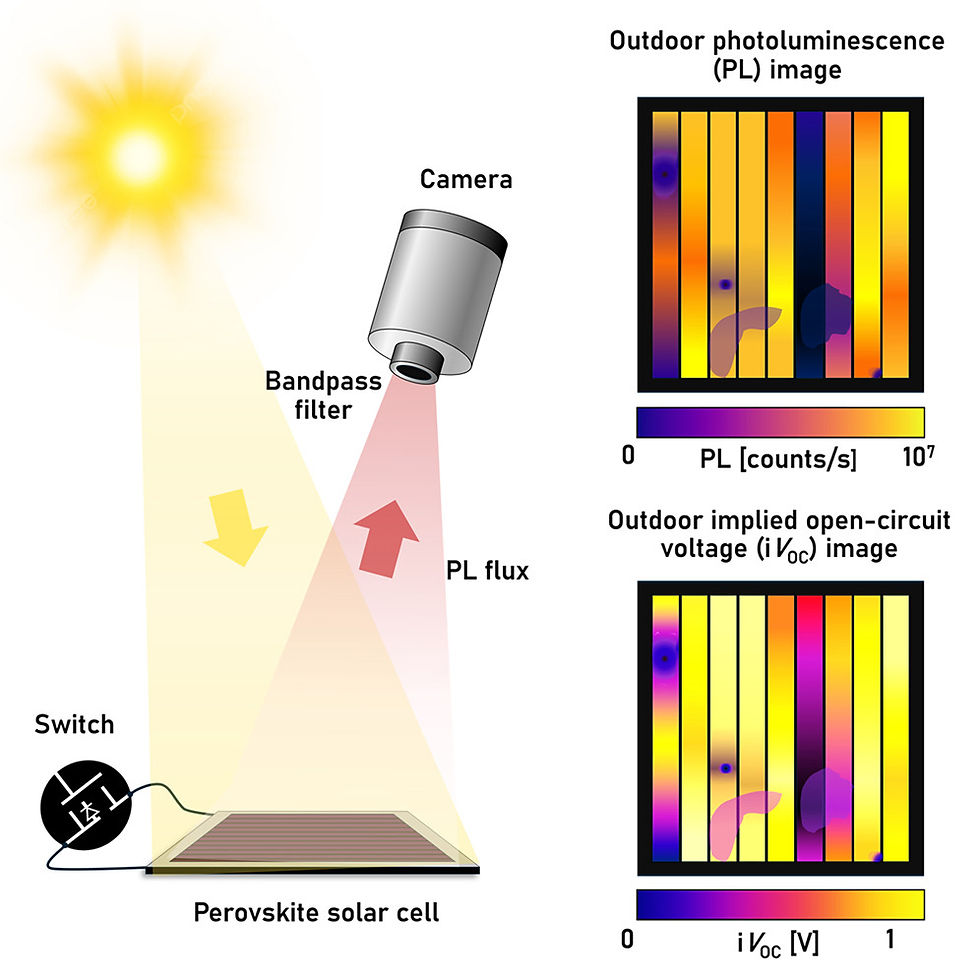UNSW-led team pioneers outdoor imaging for perovskite solar cell and module testing
- alisonpotter2
- Aug 5
- 2 min read
Updated: Aug 6
Supported by ACAP, a collaborative team of researchers from UNSW Sydney and industry partners in China, has demonstrated, for the first time, a practical way to map the performance of perovskite solar cells in real-world outdoor conditions, without touching the device.
Using photoluminescence (PL) imaging and a newly-proven outdoor method for implied open-circuit voltage (iVOC) imaging, the group showed it is possible to capture detailed, spatially resolved performance data directly under full sunlight. This breakthrough means researchers can now assess the electrical and optical quality of perovskite solar cells in the field. This has previously only been possible in a controlled laboratory environment.
Conventional PL imaging usually requires a dark, light-sealed room to block out ambient light, limiting its use for outdoor studies. The UNSW-led method sidesteps this challenge, allowing accurate measurements in natural sunlight. What’s more, the team successfully calibrated the PL signal into quantitative voltage values – a first for outdoor testing of any photovoltaic device.
Led by UNSW's Dr Felix Gayot, the team have pushed the boundaries of perovskite solar cell diagnostics and enabled real-world performance insights.
The technique, developed with Chinese industry partners Phoenixolar Optoelectronics, provides a richer picture of device behaviour than standard outdoor monitoring, which typically records only global performance metrics such as efficiency, fill factor and current–voltage curves. By adding spatial resolution, it becomes possible to pinpoint variations in performance across a device’s surface, providing valuable insights into degradation and failure mechanisms during long-term stability studies.

The research relied on a low-cost, portable setup, including an astronomy-grade camera, standard industrial optics, and inexpensive filters – proving that advanced field diagnostics can be achieved without expensive custom equipment. Lead author, Dr Felix Gayot said, "This could allow many laboratories engaged in outdoor solar cell testing to improve their monitoring capabilities with spatially resolved techniques."
Tests were carried out on perovskite mini-modules and high-efficiency small-area cells in Sydney under clear skies. Further details of the setup and the results are provided in the study “Outdoor implied open-circuit voltage imaging of perovskite solar cells using sunlight excitation,” published in Joule.

The team is now exploring applications for the technique in concentrated photovoltaics (CPV) and tandem solar cells, as well as enhancing its robustness in varying temperatures. Their work, published in Joule, represents a significant step forward in developing practical, contactless methods to evaluate next-generation solar technologies in the environments where they will ultimately operate.



Comments